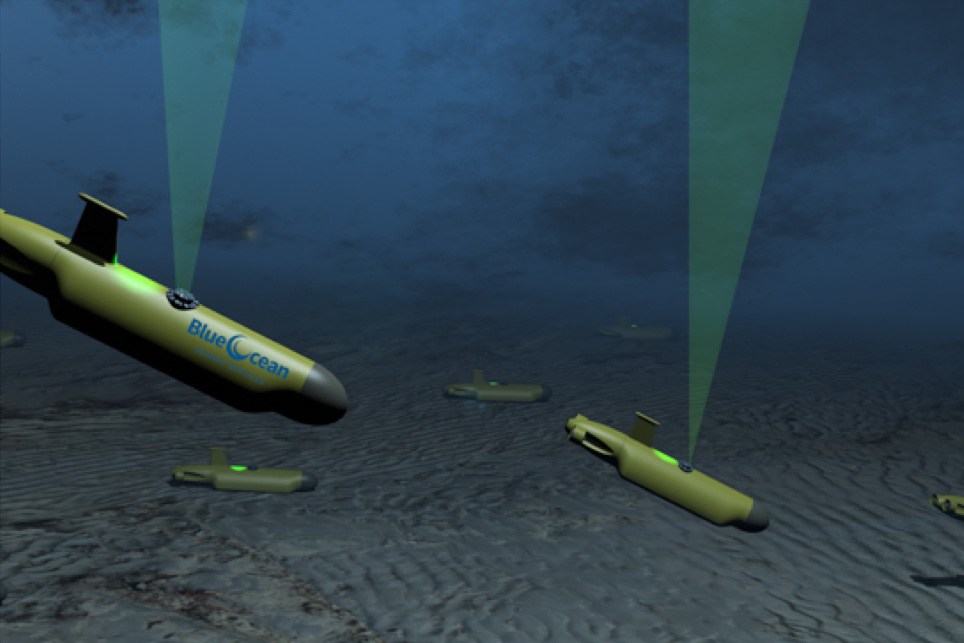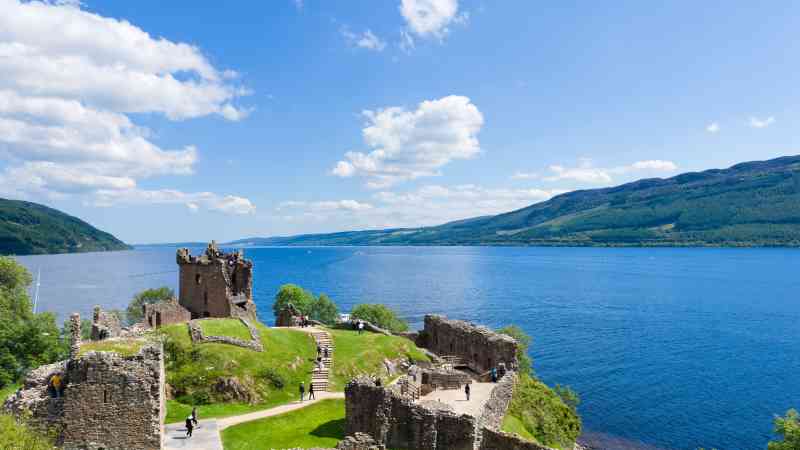Eoin O’Faodhagain, an Irish hospital clerk and veteran Loch Ness monster spotter, revealed his latest sighting of the elusive beastie last November. Logging on to the webcam that watches over the water, he saw something intriguing. “I noticed a splash and movement on the screen coming into view on the right, and a long black shape,” O’Faodhagain, 58, said.
Perhaps unsurprisingly, the report roughly coincided with the start of trials in the loch of a new kind of submarine drone. The machine was not hunting for Nessie but could eventually be a big step forward in the search for another kind of treasure hidden deep underwater: oil and gas reserves. But the biggest market could, its developers believe, be the search for the right kind of reservoirs to securely store captured carbon dioxide emissions.
The autonomous mini-subs — the test versions are 1.5 metres long; production models will be smaller — are designed to conduct seismic surveys of the ocean floor. They are made by Blue Ocean Seismic Services, a Farnborough-based company backed by BP, the Australian oil and gas producer Woodside Energy, and the Australian marine services provider Blue Ocean.
The plan, which could start to become a reality in the second half of next year, when the first commercial versions are scheduled to be ready, is to deploy the drones in large numbers over the side of survey ships. They will glide down to the seabed, survey it and then move off to the next location, before eventually returning to the mothership to transfer their data.
Simon Illingworth, a serial entrepreneur who is Blue Ocean Seismic’s chief executive, envisages the drones being deployed in “clouds” several thousand strong.
Seismic surveys are a vital tool in the offshore oil and gas industry. Traditionally these have been done by specialist vessels towing long “streamer” cables behind them. Sound waves are bounced off the ocean floor and the geography and geology of the ground is interpreted from the returns.
Better quality surveys can be obtained by placing seismic mapping devices directly on the sea floor. They can be dropped and retrieved by cable, but the method is limited by the depth of the water. At anything much more than 200 metres the units have to be placed by manned submarines, a process that can cost north of £100,000 a day.
Illingworth says Blue Ocean’s drones will cut the cost of seismic surveys by half. “We think these will be deployed in large numbers from a single ship,” he said. “Eventually we might get to a position where the whole process, including the survey vessel that will carry the drones, can be autonomous.”

One obvious target market is the oil and gas industry, which is drilling wells at ever greater depths offshore. The Brent field, one of the cornerstones of North Sea production, sits below 140 metres of water. Perdido, a Shell site in the Gulf of Mexico, is at 2,450 metres.
Illingworth said the drones would also be valuable to the offshore wind industry, where sea floor conditions are vital when siting turbines.
The largest application, however, may be in the nascent industry of carbon capture and storage. Several countries, including the UK, are investigating large-scale projects to store the CO2 emissions from industrial processes and power plants in undersea caverns. “You need to really understand the geology to have the best chance of it not leaking, then you need to go back and monitor it regularly,” he said.
Blue Ocean Seismic was set up as a spin-off from Blue Ocean, based in Perth. It developed commercial applications for the Slocum glider, a long-range autonomous submarine made by Teledyne, the American conglomerate.
“Typically they have been used by scientists doing marine research, but we thought there had to be a commercial use,” Illingworth said.
The spin-off raised £10 million three years ago and now has three shareholders. BP Ventures owns half, with the rest split between Woodside and Blue Ocean. Another fundraising is planned for early next year, and Illingworth said the search for a UK manufacturer of the production models has begun.
